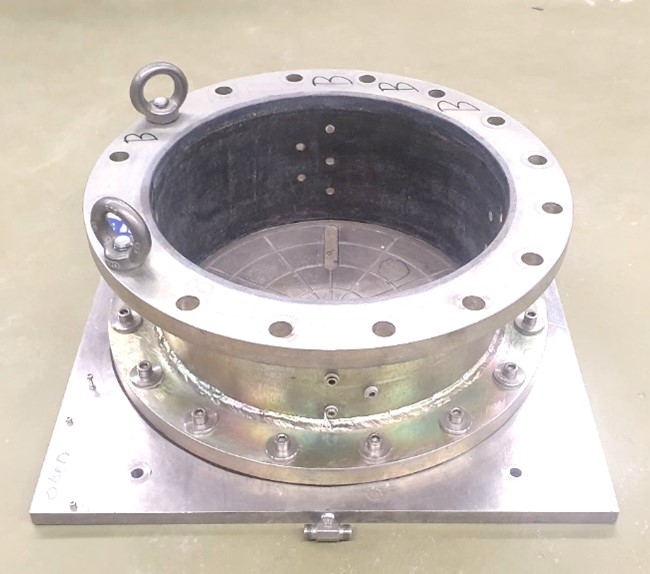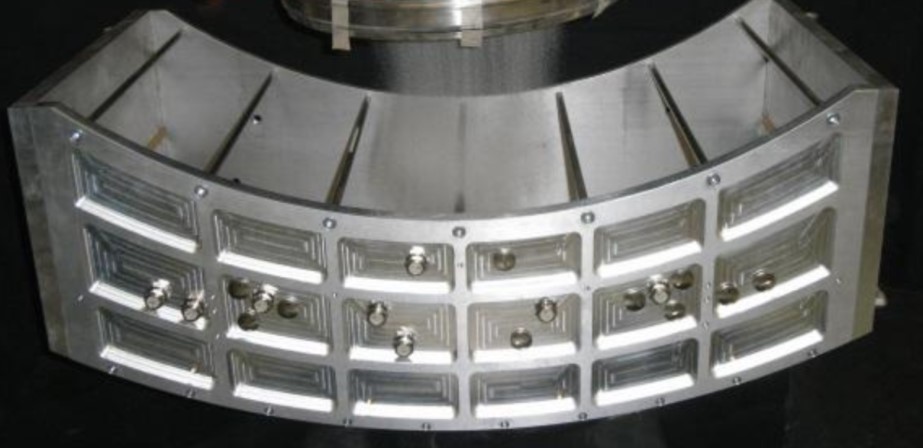Model Containers
A variety of model containers are available (always in pairs), including cylindrical and rectangular ones. The most widely-used are the cylindrical containers, which have an internal diameter of 40 cm and are of 20 cm depth (allowing 20 m depth of prototype at 100g).

The rectangular (square) strongboxes are of 40 cm length and 20 cm, being also equipped with a Perspex window to allow capturing images of the deformed soil-structure model, which are subsequently used to compute deformation and strains with particle image velocimetry (PIV). These rectangular boxes can be used in combination with the climate chamber to model rainfall-induced landslides (Askarinejad 2013).

Larger semi-circular strongboxes are also available, allowing larger models to be tested. With a length of 105 cm, 54 cm width, and 35 cm height, the semi-circular boxes were originally developed to model river dykes under transient water level conditions (Morales 2014). More recently, they were used for monotonic and cyclic loading of embedded foundations (external page J81).
